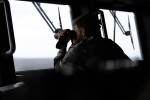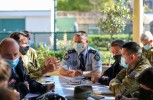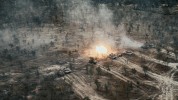Search
Using the filters to the left, click your selection, it will become bold and filter the results, click it again to remove that filter.
The principle of mission command, though not described as such, was practised by naval forces for centuries, and continues to be into the 21st century. [1] Exercise of command varies greatly depending on the context, and is highly dependent on the mix of organisational culture and enabling technology present. Since the development of radar, and reinforced by the advent of combat data systems and guided weapons, the volume of information available to a naval commander, and the speed with which command …

There is no more challenging role in the Australian Defence Force (ADF) than to command in war. ADF-P-0 Command [1] Command is not easy. In peace or war, command is one of the most difficult activities we do as military professionals. Command in the Australian Defence Force (ADF) is unique—very few organisations can knowingly order subordinates into life-threatening situations. It takes a great deal of training, education and experience to be ready to command, and then the execution of command takes …
The Utility of Mission Command within Domestic Security and Response Operations The land domain is where people live, where decision makers reside and where human, physical and technical access to all other domains begins. It is where military action intersects with populations and audiences. It encompasses decisive terrain and hosts critical infrastructure. [1] Domestic operations have unique characteristics and considerations. [2] Introduction Associate Professor David Stahel’s ‘ Auftragstaktik : The …

This paper draws on material covered in John Blaxland, The Australian Army from Whitlam to Howard (CUP, 2014). [1] Soldiers of today’s Australian Army draw on the inspiration of their predecessors. Following British tactics and procedures for the first half of the 20th century and beyond, Australian soldiers have fought at the direction of their government in conflicts and places ranging from the Anglo-Boer War in South Africa from 1899 to 1902, to Gallipoli in 1915, Beersheba in 1917 and Amiens in 1918, …

The Australian Army is a proud institution—shaped by generations of service, sacrifice and adaptation. The challenges of a rapidly evolving strategic environment demand that we reflect on our identity, our legitimacy and our relationship with the nation and society we exist to serve. This edition of the Australian Army Journal aligns with the theme of the 2025 Chief of Army’s Symposium, ‘The Army in Society ’ , and marks a milestone in our ongoing journey of professional renewal and national dialogue. …
Keogh Chair and Allis Chalmers Professor of Political Science at Marquette University Chief of Army Symposium 2025, Australian Parliament House, 26 August 2025 Good morning, everyone. Thank you, Brigadier Campbell, for that kind introduction. I would also like to thank Lieutenant General Stuart for inviting me to be here today, and his team, who have welcomed me so graciously. I am delighted to visit your beautiful country. It is my great honor today to speak to you on the relationship between army and …
The Australian Army’s current organisational structure is reminiscent of the fable of the rally driver who would not change his Cooper S Mini after he gave up racing and married. When the rally driver’s first child arrived, he retained the Mini as the family car on the assumption that he would eventually return to racing. A second child soon followed and the family could barely fit in the car. Yet the rally driver refused to dispose of his beloved racing vehicle. A third child duly arrived and the family …
Like many Australian soldiers who have served large parts of their careers between the end of the Vietnam War in the early 1970s and the deployments to East Timor, Afghanistan and Iraq since the end of the 1990s, I have not participated in a combined arms assault. The long years during which the Army was confined to continental defence resulted in a dichotomy between our doctrinal theory and military practice. Since the adoption by the Army of a maritime concept of strategy, there has been considerable …
Technology and Close Combat in the Twenty-First Century Bloomsbury Academic, London, 2023, ISBN 9781350352957, 258 pp (paperback), RRP AU$44.99 Author: Jack Watling Reviewed by: Robin Smith The Arms of the Future: Technology and Close Combat in the Twenty-First Century by Jack Watling is a seminal work that delves deeply into the transformative impact of emerging technologies on modern warfare with a particular focus on the land domain. As a military strategist, Watling brings a wealth of knowledge and …

Defence Planning and Uncertainty: Preparing for the Next Asia–Pacific War Written by: Stephan Frühling, Routledge, 2014 ISBN 9780415605731, 240pp, As the Indo–Pacific region continues to grow, both economically and militarily, a growing number of countries in the region and beyond are facing challenges in their strategic planning. Stephan Frühling asks, ‘How can countries determine what kind of military force is needed if threats are uncertain and history is full of strategic surprises?’ For the …

